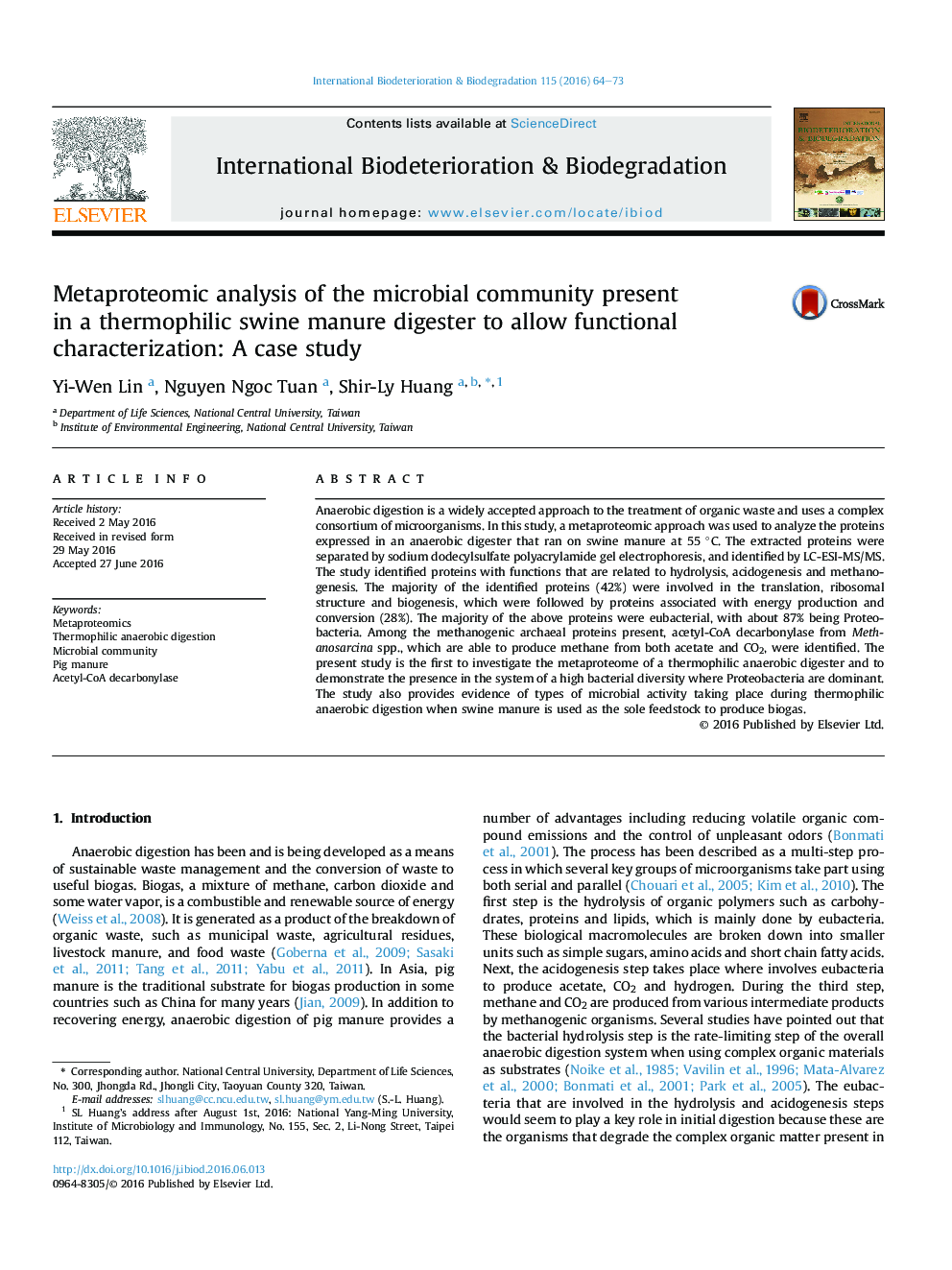| Article ID | Journal | Published Year | Pages | File Type |
|---|---|---|---|---|
| 4364161 | International Biodeterioration & Biodegradation | 2016 | 10 Pages |
•Metaproteomics approach was used to analyze the proteins expressed in an anaerobic digester.•Identified key proteins are related to hydrolysis, acidogenesis and methanogenesis.•About 87% of the bacteria were Proteobacteria.
Anaerobic digestion is a widely accepted approach to the treatment of organic waste and uses a complex consortium of microorganisms. In this study, a metaproteomic approach was used to analyze the proteins expressed in an anaerobic digester that ran on swine manure at 55 °C. The extracted proteins were separated by sodium dodecylsulfate polyacrylamide gel electrophoresis, and identified by LC-ESI-MS/MS. The study identified proteins with functions that are related to hydrolysis, acidogenesis and methanogenesis. The majority of the identified proteins (42%) were involved in the translation, ribosomal structure and biogenesis, which were followed by proteins associated with energy production and conversion (28%). The majority of the above proteins were eubacterial, with about 87% being Proteobacteria. Among the methanogenic archaeal proteins present, acetyl-CoA decarbonylase from Methanosarcina spp., which are able to produce methane from both acetate and CO2, were identified. The present study is the first to investigate the metaproteome of a thermophilic anaerobic digester and to demonstrate the presence in the system of a high bacterial diversity where Proteobacteria are dominant. The study also provides evidence of types of microbial activity taking place during thermophilic anaerobic digestion when swine manure is used as the sole feedstock to produce biogas.
